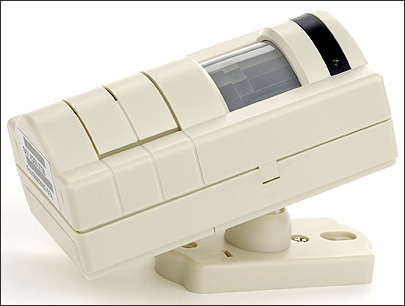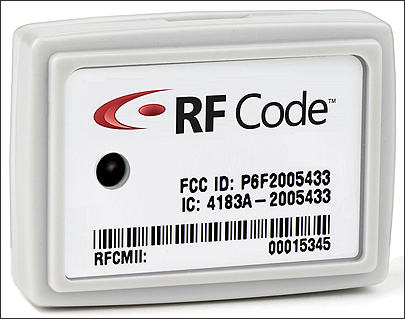Jul 31, 2007Agility Healthcare Systems, a provider of RFID-based asset-tracking and workflow improvement applications for hospitals, is taking a new approach to one of the most vexing issues facing real-time location systems (RTLS): room-level visibility. To enable end users to reliably locate the exact locations of tagged assets, the company is offering a real-time location system composed of RF and infrared (IR) auto-ID technologies developed by RF Code, coupled with its own software products.
A large, multi-hospital health-care provider has performed a beta test of the RF-IR system, says Dan Neuwirth, Agility Healthcare's COO, and Agility is currently rolling out the solution to four of its clients' locations. The company, however, declines to identify the four hospitals at this time.

In recent years, real-time location systems using RFID tags that send data over existing Wi-Fi access points have become increasingly popular, especially for asset and personnel tracking in hospitals. These RF signals penetrate walls and can often be read through floors. As such, determining the exact location of a tag transmitting its signal to Wi-Fi access points requires the use of software to analyze each tag's signal in order to pinpoint its location within a facility. Another option for making such systems more precise is to install additional Wi-Fi access points, but that drives up the cost of the RTLS deployment.
"We need to get pretty precise granularity [from an RTLS]," says Neuwirth. "In a hospital, I really need to know if a given asset is inside a given room or not. I need to know where equipment is in relation to a patient."
Each hospital room is fitted with an A700 Room Locator, an IR transmitter designed to send a location-identifying code (representing, for example, a particular patient room). RF Code's M100-i tag contains an infrared signal receiver that detects this code and retransmits it, along with its own unique ID number, to the nearest RF Code RFID interrogator. This combination of data identifies the tag and its location. The battery-powered tag transmits its RF signal over the 433 MHz band, has a read range of up to 1,000 feet and uses a proprietary air-interface protocol.
The A700 Room Locator measures 2.94 inches by 2 inches by 4.74 inches and is powered by an AC line. The unit sends out a much stronger IR signal than that transmitted by a common remote controller for a television or other household electronics, explains RF Code CEO Mitch Medford. In terms of the intensity of the signal, he says, a remote control is analogous to a penlight, while the A700 is more of a flood lamp.
The M100-i tag measures 1.84 inches by 1.35 inches by 0.46 inch. It contains a motion sensor that, when the tag is stationary, turns off the built-in IR receiver and reduces the tag's beacon rate (the number of times per minute it transmits its RF signal). This conserves battery life when the tag is not in motion and, presumably the asset to which it is attached need be tracked. The M100-i's lithium CR2032 replaceable coin-cell battery has an expected operational life of four years.

RF Code has developed a middleware layer that pulls asset and location data from the RF Code RFID receivers and can plot the goods on a facility's map. Resellers can use an application protocol interface to link this mapped data into their own RTLS software, or they can choose to take only the raw tag ID and room-location data from the receivers, pulling that data into their RTLS.
According to Neuwirth, Agility decided to integrate the RF Code M100-i and A700 Room Locator into its RTLS offering for a number of reasons. "We look at three things: the resolution that the hardware offers, the costs to achieve the highest resolution—because a system can be effective but not efficient—and the implementation requirements, such as how disruptive or complex the installation will be," he says. "We can't require RF experts be present to configure each piece of hardware. In terms of those three criteria, the RF Code solution is a relatively low-cost way to perform RTLS without a lot of engineering and disruption [to an end user's operations]."
The M100-i and A700 are available now, though RF Code sells its products only through vertical channel partners, who ultimately set the price for the goods. Still, Medford claims, "room-level visibility can be achieved for little more than $100 per room, in quantity." He adds that RF Code works with system integrators and resellers in many industries, and expects that the IR-RFID hardware and middleware it has developed will be deployed by businesses in a wide range of sectors, not just health care.

